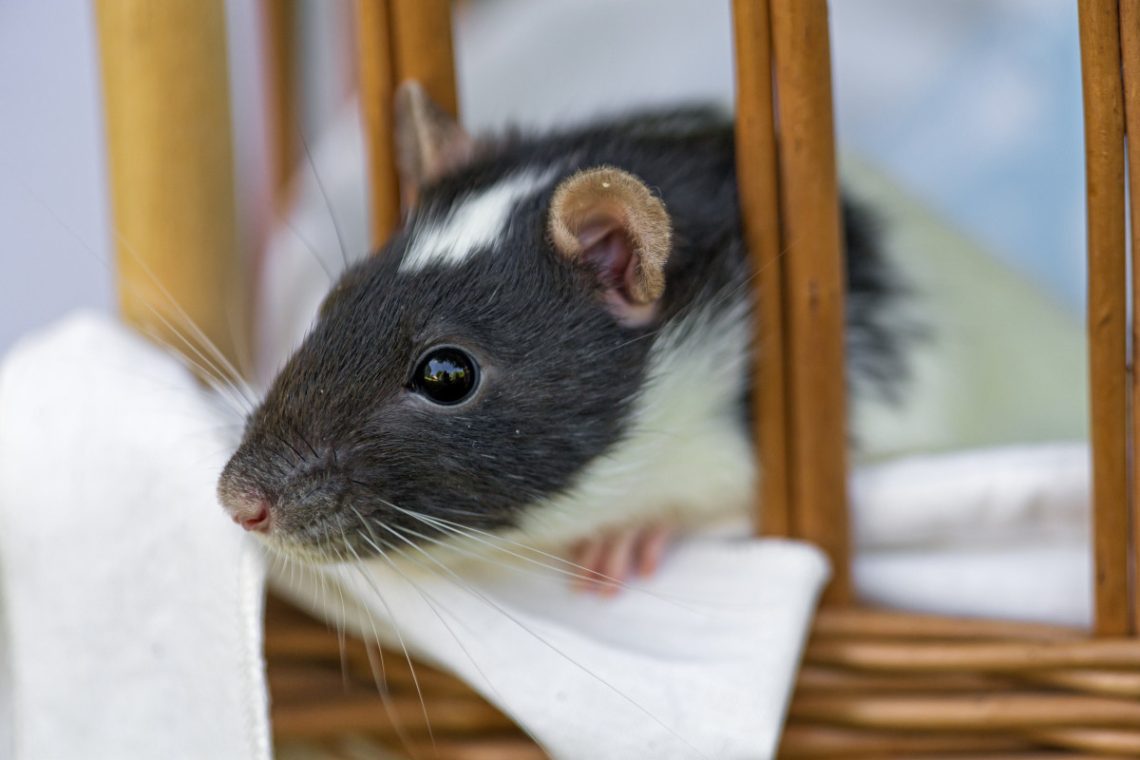
Rat house: choice, purpose and DIY creation
All decorative rodents need a permanent shelter. If the rat does not have a reliable place to hide at any time, it will feel discomfort, experience nervous tension.
Contents
What do rats use hiding places for?
Hand domestic rats can use the house in the cage quite rarely, but this does not mean that they do not need it. All pets need shelter at some point.
Stress
Even completely tame rats are frightened by strangers, a change in their usual routine, loud sounds. In the absence of the opportunity to hide, the pet will develop stress, which can lead to aggression.
Bad mood, malaise
If the animal does not feel well, he feels an instinctive need to hide, to make sure that he is well protected.
Cold
It is much easier to keep warm in a shelter, especially if several animals sleep there at once. Most rats love to insulate their mink by actively dragging pieces of paper and cloth into it.
Heat
A shaded house for a rat will help the animal to endure too warm summer days and stuffiness, and protect it from sunlight.
drafts
Small rodents catch cold very easily, a shelter with dense walls will be an additional protection and will help reduce the risk of illness.
IMPORTANT: Females are especially in dire need of shelter, which are more shy and restless than males.
If this is a rat with a distrustful character, the inability to hide will inevitably affect its behavior – aggression, depression may appear, the animal will not make contact.
How to choose – the main varieties
A decorative rat is a rather large animal, so the house must first of all be roomy. For an adult, the dimensions of the shelter should not be less than 25x15x10cm. For the first months, they often put a smaller device so that the little rat feels more comfortable. But temporary shelters very quickly become “small” and the animal can one day literally get stuck in the doorway. Such an adventure will greatly frighten the animal, and can also lead to physical injury, so it is important to replace the house with a suitable size in time.
Modern pet stores offer a wide variety of rat houses – you will find many designs and shapes, from simple to real palaces with original decoration. When choosing, the material of the product is also of great importance.
From plastic
Convenient and practical devices, easy to clean, have fasteners that are convenient to hook on the bars of the cage. But keep in mind that in such a shelter the animal can be hot and stuffy in summer.
Of wood
More suitable for rodents, making it possible to grind teeth. But wooden walls absorb urine and odors well, so the device will quickly require replacement.
Wicker
Lightweight temporary houses, usually round in shape. Made from tree bark, flexible twigs and hay. Animals are very fond of such houses, but they quickly become unusable.
Ceramic
A good option, such a house will be cool in summer, will not lead to air stagnation, and a special treatment will protect the surface from pollution. The downside is fragility – a ceramic product is easy to break by negligence.
Soft
An unusual shelter made of dense fabric, which is also often hung up and used as a hammock. Such products can be washed, but they still do not last too long – the rat will definitely gnaw on soft walls.
IMPORTANT: If there is not much space in the cage, the house can be installed outside. To do this, one of the lattice doors is removed, the device is attached to the resulting opening with a wire.
It can also be installed on the roof. If the animal is completely tame and you do not close the cage door, the house can be placed or hung next to it – on a closet or on a wall, fabric products are well suited for this.
Despite the large selection of models, some owners decide to make a house for a rat with their own hands. This allows not only to take into account all the features of the conditions in a particular cell, but also to realize their own unusual ideas.
How to make a house for a rat with your own hands
The easiest option is to use a suitable household item as a house.
An overturned cracked clay pot makes a great hiding place for a baby rat. A plastic container is also suitable – a food container, a children’s bucket, a flower pot – it is enough to cut a doorway with a construction knife. From a doll house that has become unnecessary, you will get a magnificent home for a pet. The shelter can even be knitted or sewn from a suitable fabric. Cardboard boxes are suitable as temporary houses, which the domestic rat will also use as toys, gradually chewing them apart.
If you want to make a reliable and permanent home for rats, your best bet is wood or plywood. The manufacturing process consists of several simple steps:
- First of all, you should find or develop your own project. You can choose a practical rectangular shape that will allow you to install a shelter in any part of the cage. Or decorate the house with a gable roof, turrets and other elements – the appearance of the product depends only on your imagination.
- Take measurements of that part of the cage where you put the future house, so as not to be mistaken with its size. Then, taking into account the selected project, a drawing is made.
- Cut out the blanks with a hacksaw. Be sure to make at least two holes for better ventilation (door and window). All openings should be large enough – at least 5-7 cm wide, this will eliminate the risk of getting stuck in an animal that has grown or gained weight.
- Fasten the walls of the house together with self-tapping screws, nails, or use wood glue.
It is not recommended to cover the finished product with impregnations and varnishes – rats will definitely gnaw on the walls, so there may be a danger of poisoning or allergies. To facilitate cleaning, as well as to avoid urine absorption into the wood, the house is made without a bottom – the plastic bottom of the cage will serve as the floor. Rats are also very fond of sleeping on the roof, so it is recommended to stick a piece of plastic there or make slopes – this will help protect the surface from getting wet.
In addition to the rat house, you can make tunnels, labyrinths, balls, lawns with your own hands. You can read about this in our material on homemade toys.
Video: how to make a house for a rat with your own hands
House for rats: how to choose ready-made or do it yourself
4.5 (89.09%) 121 votes





